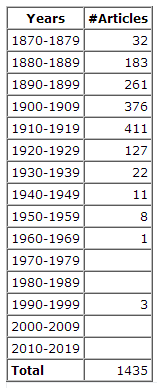Ligonier Valley Rail Road Newspaper Articles
 We have compiled over 1,400 newspaper articles that mention the Ligonier Valley Railroad, or related subjects. The articles were originally published starting in 1873 and our collection runs through 1995. Enjoy!
We have compiled over 1,400 newspaper articles that mention the Ligonier Valley Railroad, or related subjects. The articles were originally published starting in 1873 and our collection runs through 1995. Enjoy!
Latrobe Advance
Wednesday, August 15, 1883
The Blue Rock Quarries
One Of The Many Industries About Latrobe - Where The Quarries At Situated - When They Were Opened - Something About The Lime Formation
Situated in the picturesque and romantic spot in a gap of the Chestnut Ridge, a short
distance beyond the now almost forgotten site of Kingston Forge and four miles from Latrobe, is the famous Blue Rock or Belgian Block Quarries. The are immediately on the line of the Ligonier Valley Railroad, which follows the serpentine windings of the beautiful Loyalhanna clear through this gap of mountains to Ligonier. With the Loyalhanna and the railroad on one hand and the towering hill, covered with rocks, trees and shrubbery, on the other the quarry looks like a mere hole in the ground. It is only when you take the measurements that the vastness of the enterprise becomes apparent.
The existence of this body of stone was known to some parties for years, but from the fact that the Pennsylvania Railroad was too far away, not much thought was entertained looking to its development. It was only with the completion of the Ligonier Valley Railroad, which connects with the Pennsylvania at Latrobe, that the idea of getting the stone to market assumed a definite form.
Accordingly, on the 25th day of February, 1882, Messrs. Booth & Flinn, of Pittsburgh, well known contractors, set a gang of laborers to work to strip the rock in order to see if it was accessible and if it could be taken out in shape to pay. The investigations proving favorable, skilled workmen principally from Jersey, were shipped to Blue Rock and put to work. Since the above date work has been going on constantly, on an overage of forty men being employed and at some times as high as sixty-five. These are composed of block makers, clippers, drillers, laborers, etc. and all are under the superintendency of
Mr. Michael Murray, of Latrobe, who thoroughly understands the stone and how to work it the best advantage. Diamond drills and all the modern appliances are used. An ordinary quarryman in this place would be of more harm than benefit. To successfully work this stone and get it out with the least possible loss requires skilled labor.
After a large mass of the rock has been knocked down by a blast, the block maker takes a twenty-five pound hammer, and going at a large irregular piece of it, with a few seemingly gentle taps, splits it and then with a lighter hammer forms the blocks in the rough. Under his skillful manipulation the stone splits as easy and straight as a pine block. From his hands the block passes to the clipper, who, with a still smaller hammer, dresses up the different faces and makes it ready for the market. Although blocks are being shipped daily, there are now at the quarries between five and six hundred car-loads. There are three different grades of stone produced. First, the regular blocks which are all symmetrically formed, and are shipped to all the principal cities to be used for paving the streets. Second, the irregular blocks which are also used for paving, being laid much after the manner of cobblestones, and third, the clippings which are used both for macadamizing streets and for railroad ballast.
There is a beautiful face of rock exposed at these quarries. It is about two hundred and fifty feet long by fifty feet high, and the bottom of the seam has not yet been reached. Booth & Flinn also operate quarries of the same kind three miles above Connellsville.
More . . . .


 1
1